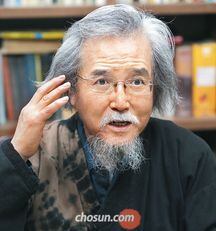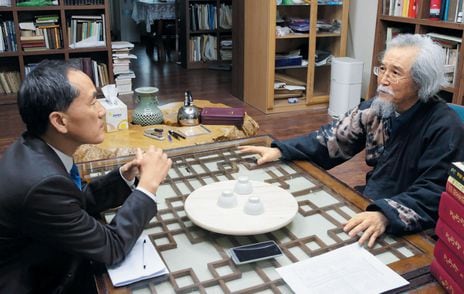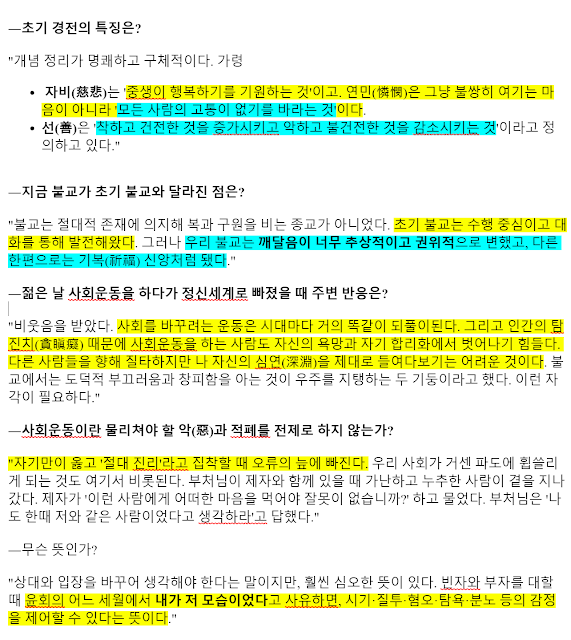Kindle Edition
by Damo Mitchell (Author) Format: Kindle Edition
4.8 out of 5 stars 73 ratings
A complete and detailed explanation of the Nei Gong process. Explaining the philosophy at the core of Daoist Nei Gong, and illustrated with detailed figures throughout, this fascinating text will be of interest to practitioners of Qi Gong, martial arts and practitioners, and to anyone interested in Eastern philosophy.
Editorial Reviews
Review
I urge anyone interested in the internal arts to read this book. You won't get standard regurgitated descriptions of Qi or Qi gong. Nor will you get exotic tales of secret rituals in dark caverns. What you will get is a truly comprehensive sharing of profound information in an accessible format. Damo has not only dedicated his life to cultivating 'gong' but also to understanding the processes involved (somatically and intellectually) so that others can benefit. -- Dr Cindy Engel, Associate Lecturer, The Open University, U.K
I really don't know of anyone else who has written about the nei gong process in the depth and detail in which Damo has. He clearly writes from a depth of experience in the nei gong tradition. He has a unique ability to explain nei gong in a clear and logical way that anyone can understand if prepared to make the effort. The diagrams in the books are especially helpful in making concepts clear. -- Kenneth Morgan, Medical Qigong Education Centre --This text refers to the paperback edition.
About the Author
Damo Mitchell has studied the martial, medical and spiritual arts of Asia since the age of four. His studies have taken him across the planet in search of authentic masters. He is the technical director of the Lotus Nei Gong School of Daoist Arts, and teaches Nei Gong in the UK, Sweden and the USA. --This text refers to the paperback edition.
Book Description
A comprehensive explanation of the philosophy and process of Nei Gong, the Daoist path to transformation --This text refers to the paperback edition.
Read less
Product details
File Size : 9810 KB
Publisher : Singing Dragon (August 21, 2018)
Publication Date : August 21, 2018
Print Length : 570 pages
Word Wise : Enabled
Language: : English
ASIN : B07GNLWWTJ
Enhanced Typesetting : Enabled
Text-to-Speech : Not enabled
----
Customer Reviews: 4.8 out of 5 stars 73 ratings
Damo Mitchell
Biography
Damo Mitchell began his training in the Eastern arts in 1984 and has spent his entire life studying the martial, medical and spiritual teachings of China, India and South-East Asia. His travels have taken him high into the mountains of the Far East as well as through jungles, into temple complexes and on searches for masters through the smoggy cities of China, Thailand and Malaysia. His time is spent between Europe, America and Asia where he continues to travel and study as well as teach and write books on Daoism and the internal arts.
Damo is the technical director of the Lotus Nei Gong International School of Internal Arts as well as the head of the Xian Tian College of Chinese Medicine. He can be found through his main website which is: http://www.lotusneigong.com
Show More
Sponsored
Customer reviews
4.8 out of 5 stars
4.8 out of 5
Top reviews
Top reviews from the United States
Jbuyer
5.0 out of 5 stars Clear, practical, sincere, and essential
Reviewed in the United States on September 20, 2018
Verified Purchase
I believe this to be the best practical guide to the internal arts written in the English language to date. What Damo Mitchell has accomplished here is to take complex and esoteric information and make it practical. A discerning reader will see that Damo covers many small (and important) details that other guides leave out. Those people lucky enough to encounter this book early in their practices will save themselves from many frustrating and potentially even dangerous mistakes. In addition, Damo writes in an accessible, conversational style, giving concrete, practical tools on a subject that often seems abstract and inaccessible. This book is a true gift to any practitioner of the internal arts, whether advanced or beginner.
13 people found this helpful
--
TAMAR A.
5.0 out of 5 stars Must read!
Reviewed in the United States on August 27, 2018
Verified Purchase
For those of you interested in qi gong/nei gong, this is the book for you. This Is hands down the most comprehensive book available on this topic! Damo Mitchell has put years of training, research, and study into one concise manual. If you are looking for an overarching study on nei gong , you will not be disappointed!
17 people found this helpful
--
Russ McW.
5.0 out of 5 stars Truly a Comprehensive Guide
Reviewed in the United States on March 14, 2019
Verified Purchase
This book delivers on its title--it is COMPREHENSIVE! It had everything I was looking for on the topic and more. The book is well-written in a way that the layperson can understand this complex subject. Damo Mitchell's writing style flows and it reads easily throughout the book, and the material is presented in a progressive order. It helped me because it explained several things that I had experienced in my own practice, as well as giving me new material that advanced my practice in ways for which I am grateful. Recommend!
8 people found this helpful
--
Avi Nash
5.0 out of 5 stars Best Book on the topic
Reviewed in the United States on October 12, 2018
Verified Purchase
Having read several books on Qigong and eastern energetic practices, I can honestly say that Damo's latest book on Neigong (the internal art of change) is hands down my favorite book on the topic. It’s certainly an extraordinary gift to the internal arts community, but an even greater boon to students in the Lotus Neigong community. To especially the latter, this is a book to be savored, and I cannot recommend it more highly. So very many questions are answered on topics that a student would be curious about, or should be curious about. Happy reading!
9 people found this helpful
--
Joe Randall
5.0 out of 5 stars Damo Mitchell nails it with this book!
Reviewed in the United States on December 18, 2018
Verified Purchase
This is a truly excellent book on the subject of Nei Gong. Damo Mitchell has a depth and breadth of knowledge, based on many years of high quality experience in the Daoist Arts, that is profound. He makes an appropriate amount of that accessible to us in this book. If you have a practice, especially in Qi Gong/Nei Gong, this book will be a real boon to you. If not, it may help lead you to a valid instructor. At the least, it will give you an insight into why those of us with a practice do so.
8 people found this helpful
--
Joseph
5.0 out of 5 stars One of the best books I have ever read
Reviewed in the United States on January 14, 2019
Verified Purchase
This is an dense information rich guide into the mysterious and endlessly interesting world of Nei Gong. It is among very very few books that I have finished and immediately wanted to read again in order to digest all of the information at least once more. Top three most insightful books I have ready in my life! Two thumbs up!
7 people found this helpful
--
Loi
5.0 out of 5 stars Comprehensive book on Nei Gong
Reviewed in the United States on January 11, 2019
Verified Purchase
I went to Damo's seminar before. He's a great teacher and practices or more than his students. Must have for serious practitioners.
4 people found this helpful
Helpful
Comment Report abuse
G
5.0 out of 5 stars Excellent and comprehensive Guide
Reviewed in the United States on June 14, 2019
Verified Purchase
Rarely you find books on this subject that are so clear and well written. I found that every page was a treasure of knowledge, I would highly recommend it to anyone who is in the qi-gong, nei-gong or any internal martial art. It is comprehensive of many details and shows the depth of the knowledge Mr. Mitchell acquired in his training. Excellent job!
One person found this helpful
Helpful
Comment Report abuse
See all reviews
Top reviews from other countries
Anna
5.0 out of 5 stars A Comprehensive Guide to Daoist Nei Gong
Reviewed in the United Kingdom on October 28, 2018
Verified Purchase
This book is exactly what the title says!
Most books about Qi Gong describe exercise sets. They may be somewhat useful and doing the exercises may bring some benefits. However, the benefits are probably comparable to what walking in nature or some similar light activity might bring (i.e. some health benefits, temporary relaxation etc.).
What this book describes is something completely different. Nei Gong can cause really big changes in a person, not just in the body and health but also in the personality, behavior etc. I have been practicing with Damo for four years and I have already changed in many ways. My health has improved and I can move much better. But more importantly, I feel so much more relaxed and free now, as my mind has been able to let go of many of the old thought patterns and unnecessary fears and fixations that it used to hold on to. And this is only the beginning of the Nei Gong process.
This is the best book about Nei Gong that I know of. It gives comprehensive overview of the Nei Gong process and additionally very detailed and practical instructions for the beginning stages of the practice. It is an honest description of the process, not making empty promises about quick or easy results. Progress in the Nei Gong process requires consistent practice. With the process Damo describes, the progress and benefits are real, but the required effort is very real too.
I think this book is very helpful especially for students of Lotus Nei Gong or any other teacher/school teaching similar system. Information in the book helps students to finetune the beginning stages of the practice (Wuji posture for example) and to remember to include all the aspects of the practice that should be there to make it work (there are so many details that it is easy to miss or forget something essential).
This book is also useful for anyone wanting to get an overview and general understanding about Nei Gong. I love the way Damo demystifies the subject and makes it easier to understand for someone with a contemporary western mind.
Read less
7 people found this helpful
--
L. J. Griffiths
5.0 out of 5 stars My favourite book
Reviewed in the United Kingdom on October 12, 2018
Verified Purchase
If I could only have one book, this would be it! Despite it being a complicated subject Damo Mitchell makes neigong understandable and straight forward. Concepts are carefully explained with plentiful diagrams which is helpful when the reader has a visual memory. Thank goodness it's available in Kindle format too (I have both!) as the paperback is a weighty tome. I feel that in the years to come this will be THE standard reference work on the subject.
6 people found this helpful
--
David Austin
5.0 out of 5 stars Essential reading for all Qi Gong practitioners.
Reviewed in the United Kingdom on February 21, 2019
Verified Purchase
An incredible book that very clearly describes and explains many aspects of authentic internal cultivation that really are very hard to find normally. There are so many dead ends out there due to misunderstanding of classical texts or errors in other authors' practice (or worse yet, they don't actually cultivate and are writing from a purely academic stand point).
The author writes from an experiential point of view and in a very clear and accessible manner. Nothing is lost in translation!
If you are interested in self cultivation or are currently practising Qi Gong/Nei Gong or even Taiji, then this book is essential.
3 people found this helpful
---
matty
5.0 out of 5 stars Essential reading !!
Reviewed in the United Kingdom on August 29, 2018
Verified Purchase
Quite simply the best book on the subject you will find. Damo has a unique ability in taking something as complicated and confusing as Daoist philiosophy and explains it in an ordered, succinct and comperhensible manner. I have studied the Chinese arts for many years but the way it is explained here in this book gives rise to an "ah ha" or "of course" moment nearly on every page. If you really want to get to the how's and why's of Nei gong and Qi gong, then this book is essential reading.
5 people found this helpful
---
Marc B.
5.0 out of 5 stars A Well defined Clear and concise journey along the Daoists internal cultivation path.
Reviewed in the United Kingdom on March 8, 2020
Verified Purchase
I have been practicing qi gong for many years and have had several teachers (of varying effectivity) in different schools and from different countries along the way. I can safely say that for myself none have come close or compare to the authentic clarity and insight we can gain from Damo's writing- The western qi gong world has been waiting for this kind of material put together holistically as he has done here, for a long time. In this book especially, Damo has managed to take the flowery metaphor and often convoluted complexity out of much of the Daoist 'secret ways' and convey a relatively safe and definately effective method to progress along the path of Neigong (as long as the student is dedicated, sticks to the program and gets at least occasional instruction from a bonafide and experienced teacher) one will be able to open the channels, develope the dantien (and other centres) expereince significant health benefits (physical, mental and emotional) and ultimately become more at one with the cosmos. What more can the western aspirant ask for? if you are a qi gong practioner looking for "The Book" then this may well be it for you. Certainly i use it as a reference continually, it is my primary go to, at home font of Neigong wisdom.
 전재성씨는“자기만이 옳고‘절대 진리’라고 집착할 때 오류의 늪에 빠진다”고 말했다.
전재성씨는“자기만이 옳고‘절대 진리’라고 집착할 때 오류의 늪에 빠진다”고 말했다.




![Daoist Nei Gong: The Philosophical Art of Change by [Damo Mitchell, Cindy Engel]](https://m.media-amazon.com/images/I/41-X7tP1ajL.jpg)
![A Comprehensive Guide to Daoist Nei Gong by [Damo Mitchell]](https://m.media-amazon.com/images/I/41FR2g81ZeL.jpg)

